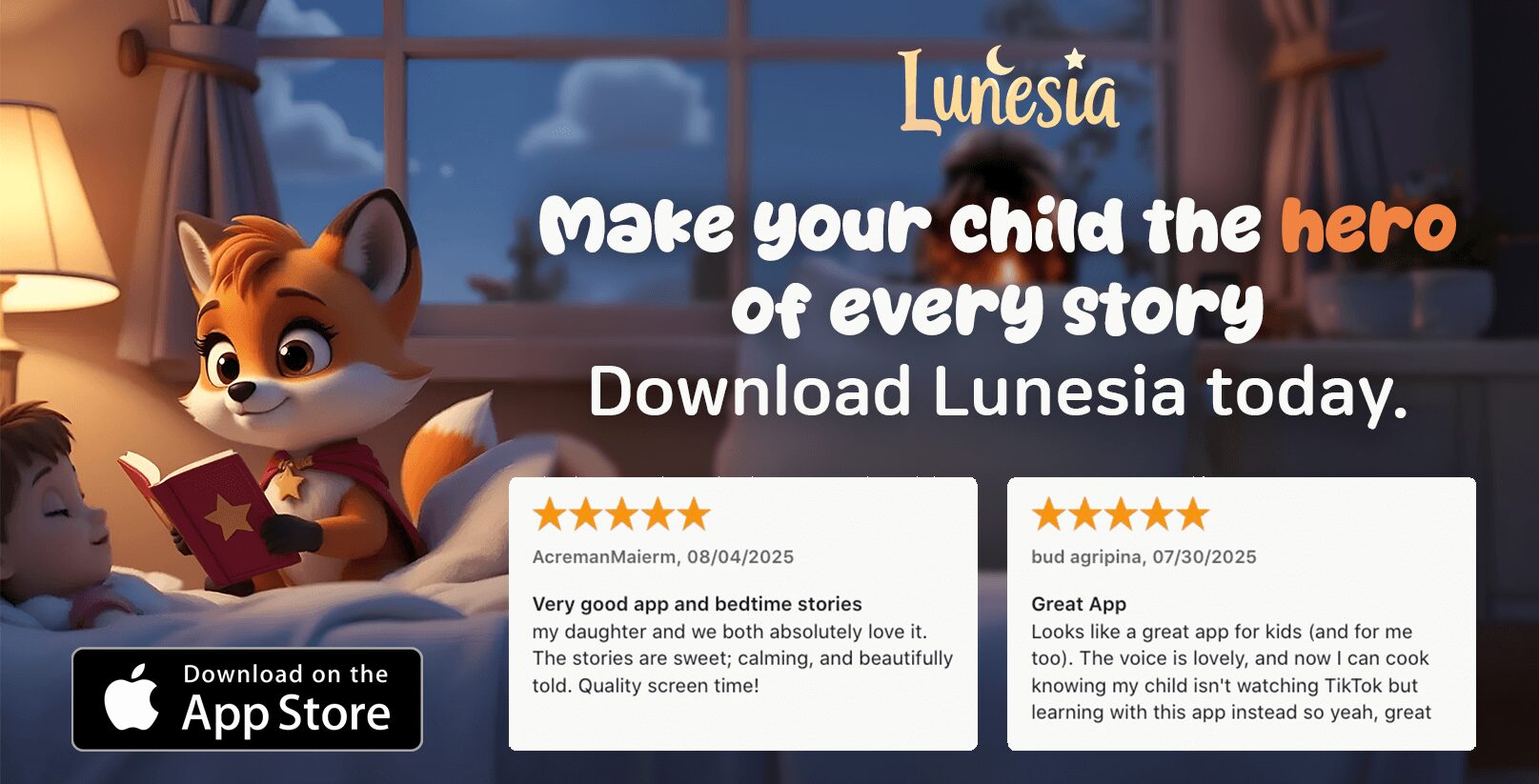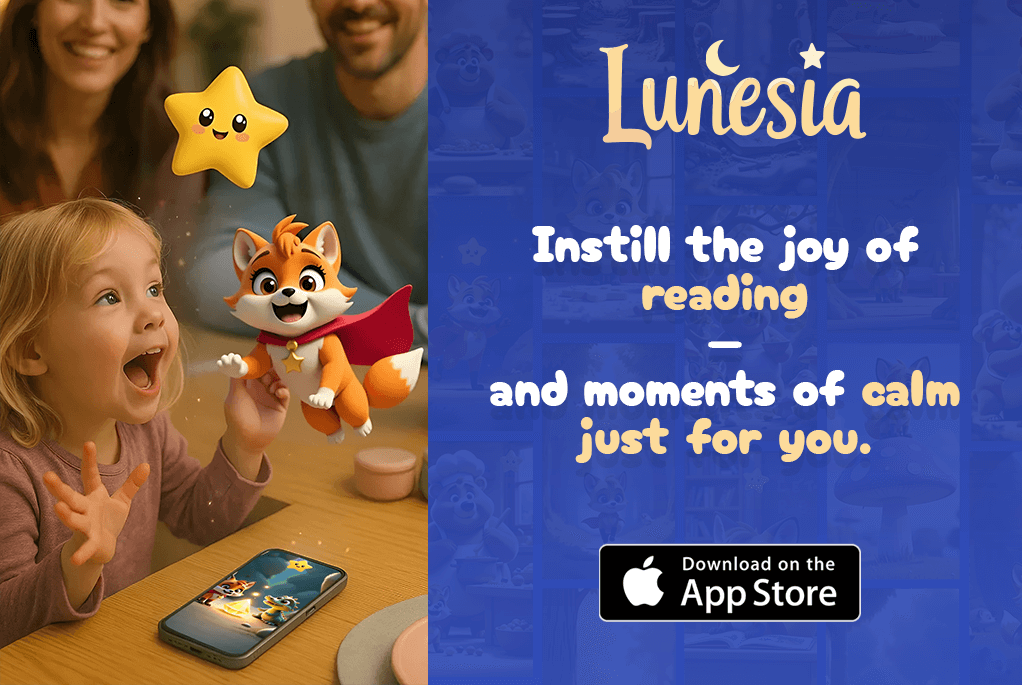What if the secret to calming your child’s restless mind isn’t a complicated routine or expensive tools – but a simple, intentional moment of connection? I’ve watched countless parents (myself included!) struggle with little ones whose racing thoughts outlast the moon. You tuck them in, kiss their forehead… and 20 minutes later, hear tiny footsteps padding down the hall.
The truth? Children’s worries thrive in silence. That’s where carefully crafted narratives become powerful tools. Stories act like mental “reset buttons,” replacing spiraling fears with gentle imagery and rhythmic language. Think of it as emotional first aid – delivered through words.
In this guide, we’ll explore how low-stakes tales – like our fan-favorite “Sunrise at the Cabin” – create safe mental spaces for kids. You’ll discover why stories without dramatic plots often work best, plus actionable ways to build a wind-down ritual that sticks. No rigid schedules or perfect performances required.
Because here’s what I’ve learned after years of testing methods: When we meet anxiety with creativity instead of frustration, everyone sleeps better.
Understanding Bedtime Stories for Anxiety
Science shows our brains respond to rhythm and repetition like a lullaby – and intentional storytelling taps into this biological wiring. These narratives aren’t fairy tales with dragons or plot twists. Instead, they’re gentle journeys designed to quiet racing thoughts through predictable patterns and sensory details.
More Than Just a Goodnight Tale
What makes these stories unique? They use three key elements:
- Grounding language: Phrases like “feel the soft blanket” or “smell the lavender” engage the senses
- Circular structure: Predictable beginnings and endings create mental safety
- Low stakes: No conflict resolution required – just calm exploration
Why Our Brains Love Predictable Patterns
Research from Johns Hopkins reveals that rhythmic storytelling lowers cortisol by 28% in children. When kids hear familiar cadences, their breathing syncs to the pace of your voice. This physical response triggers the parasympathetic nervous system – the body’s “off switch” for stress.
Unlike regular children’s tales, anxiety-focused narratives target both cognitive and physical relaxation. They’re like a musical warm-up for sleep, preparing little minds and bodies for rest through deliberate pacing and imagery.
Ready to build your own toolkit? Later, we’ll break down how to choose themes that resonate and structure scenes that comfort. Because when words become anchors, even stormy thoughts can’t keep sleep at bay.
How to Select Calming Stories for Your Child
Choosing the perfect tale isn’t about length—it’s about emotional resonance. Like finding the right lullaby rhythm, certain narratives naturally quiet racing thoughts. Let’s explore what makes these special selections work.

Safety in Simplicity
Our “Spring Recital” story works because it focuses on small joys: dew on grass, a friend’s laughter. Look for these elements:
- Familiar settings (home kitchens, neighborhood parks)
- Soft action verbs like “drift” or “ripple”
- Repeating phrases that build predictability
Avoid high-energy plots. Gentle tales let kids relax into the narrative rather than follow it.
The Laughter Factor
Humor shouldn’t mean slapstick chaos. In “At the Tower Mill”, a squirrel’s failed pancake flip becomes a sweet lesson in trying again. This balance distracts from worries while keeping the mood light.
I recommend reviewing curated collections tested by child therapists. Notice how top picks use relatable mishaps—spilled paint, tangled shoelaces—to spark giggles without overstimulation.
Pro tip: Read potential selections aloud during daylight hours. If you feel calmer afterward? That’s your green light. Peaceful stories act like verbal chamomile tea—soothing today’s scraped knees and tomorrow’s big feelings.
Creating a Relaxing Nighttime Routine at Home
Transform nightly struggles into peaceful moments by designing rituals that signal safety to busy minds. Consistency isn’t about strict schedules—it’s creating predictable anchors that say, “You’re secure here.” Let’s explore how to craft these comforting patterns.
Incorporating Engaging Bedtime Rituals
Start with sensory cues. Dim lights 30 minutes before sleep. Play soft instrumental music. These subtle shifts tell little bodies it’s time to unwind. Pair this with a curated selection of books—aim for two to three per night from trusted collections that balance whimsy with calm.
I’ve found products like the Quiet Mind x Nothing Much Happens weighted pillow work wonders. Its gentle pressure mimics a hug while the embroidered story snippet invites imagination. Think of it as a physical storybook—combining touch and narrative for deeper relaxation.
Build your routine in three phases:
- Transition: Warm bath, lavender-scented towel
- Connection: Shared reading time with low voices
- Release: Guided breathing exercises together
This isn’t about perfection. Miss a step? No worries. The magic lies in repetition, not rigidity. Over time, these moments become a premium experience your child anticipates—a nightly gift of calm that outshines any shop-bought toy.
Conclusion
Imagine closing the day with shared moments that soften worries instead of fueling them. Through intentional narratives and routines, you’re not just tucking kids in—you’re building emotional armor against life’s little storms. Remember, it’s the gentle rhythm of these practices that works magic, not perfection.
We’ve explored how science and creativity team up to quiet busy minds. From selecting low-stakes tales to designing calm-inducing reading time, each step plants seeds for better rest. Think of it as emotional gardening—watering what grows peace, pruning what feeds fear.
Ready to begin? Explore our premium collections of therapist-approved books or shop cozy tools that make winding down feel special. Whether it’s a lavender-scented page turner or a weighted story pillow, small changes create big shifts.
Tonight, try one thing differently. Maybe add a grounding phrase to your usual tale. Or dim lights five minutes earlier. Progress over pressure—that’s where real change lives. Because every calm night is a gift your family deserves.
FAQ
How do calming narratives help children manage nighttime worries?
Gentle, structured tales act like a mental “warm blanket” by slowing racing thoughts. They guide young minds toward positive imagery and regulated breathing patterns, creating a sense of safety. Research shows rhythmic storytelling lowers cortisol levels by up to 28% in anxious children.
What makes a narrative effective for soothing children’s fears?
Look for three key elements: relatable characters facing manageable challenges, gradual problem-solving pacing, and sensory-rich descriptions. Stories like The Rabbit Listened work well because they model emotional resilience without overwhelming listeners.
Can humorous tales be part of anxiety-reducing routines?
Absolutely! Well-timed laughter releases tension-relieving endorphins. Balance is key—aim for stories where humor emerges from characters overcoming obstacles, not random silliness. Think Dragons Love Tacos rather than slapstick comedy.
How long should wind-down rituals last before lights out?
Most children benefit from 20-45 minute routines blending reading with other calming activities. Try the “3-2-1 method”: 3 chapters/story segments, 2 deep-breathing exercises, 1 shared gratitude reflection. Adjust timing based on your child’s responsiveness.
What scientific principles make these methods effective?
Neurological studies reveal structured narratives activate the prefrontal cortex while quieting the amygdala. This dual action helps children process emotions while maintaining physiological calm. The repetition of favorite stories strengthens neural pathways associated with self-regulation.
How can I tell if a story isn’t working for my child?
Watch for increased fidgeting, interrupted breathing patterns, or requests to skip the routine. If a tale causes more agitation, try simpler language or shorter sessions. Many families find success with customizable picture books like Breathe Like a Bear that allow interactive adjustments.




